A shared passion for forests
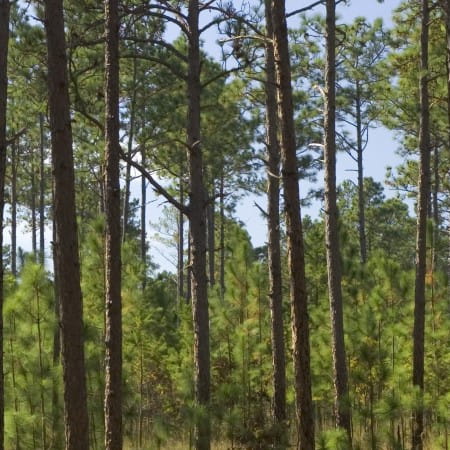
The Nature Conservancy (TNC), whose mission is to conserve the lands and waters on which all life depends, and the WestRock Foundation established a partnership in 2017 in support of WestRock’s commitment to sustainable forest management and environmental stewardship. Our partnership has expanded to several states across the southeast U.S., including Georgia, South Carolina, Tennessee and Virginia.
In 2021, TNC continued to make progress on key projects in Georgia, South Carolina and Virginia, and closed on an important tract of land in Tennessee. We are excited to share outcomes of key projects and look forward to continuing our impactful partnership that supports WestRock’s commitment to sustainable forestry.
These initiatives speak to the importance of our shared goals. At WestRock, we are imagining and delivering on the promise of a sustainable future, and we value trusted partners like TNC to help us uphold our commitment to sustainable forestry and water stewardship.
Kevin Hudson, senior vice president, Forest and Recycled Fiber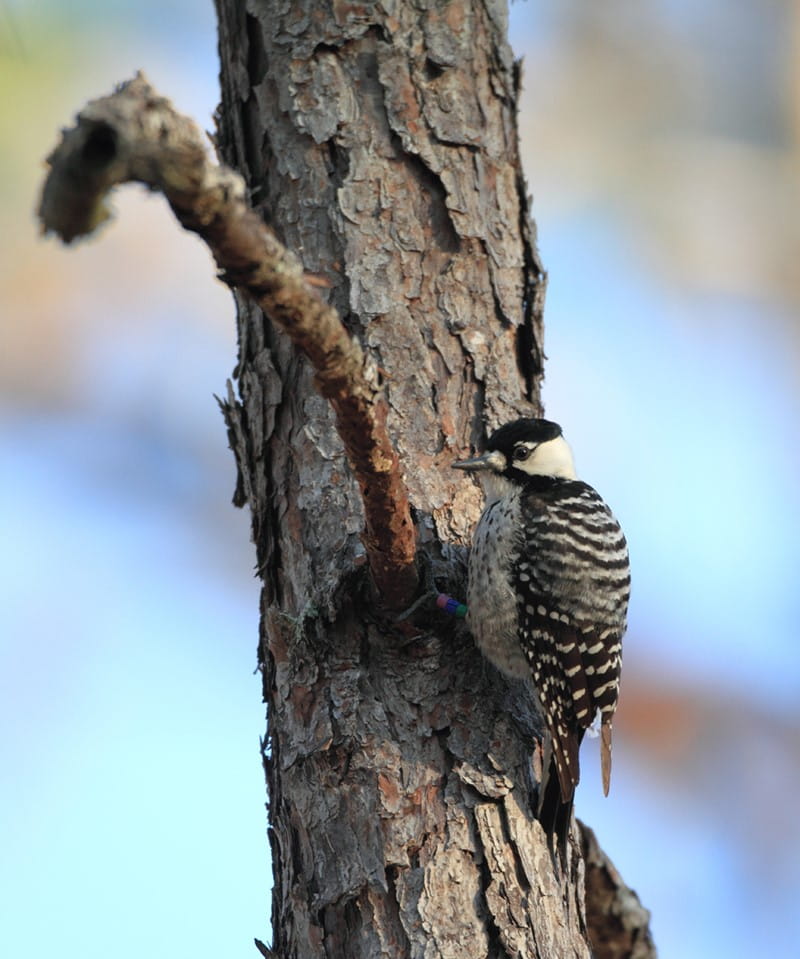
Virginia
The Nature Conservancy in Virginia made important conservation strides in 2021 as they continued to build a base of protected lands to promote groundcover restoration, rare species recovery, and fire and forest management. The partnership secured the preservation of 2,500-acres of upland pine and floodplain forest along the Nottoway, Meherrin and Blackwater Rivers and planted 102,130 longleaf pine seedlings on The Nature Conservancy conservation easements and privately held land. TNC also launched a groundcover restoration pilot project, working with a group of Virginia landowners, agency biologists, consultants and university students to establish native plant seed orchards. In 2021, there was also a return to prescribed fires after a COVID-era pause, with 7,160-acres of fire-adept longleaf, shortleaf and pond pine burned to promote regeneration.
Additional efforts in Virginia saw the continued protection and recovery of three federally listed rare species – the red cockaded woodpecker, the northern long-eared bat and the southeastern fox squirrel – as well as the implementation of a first-of-its-kind alternative restoration technique for established forests, results of which will be monitored by the USDA Natural Resources Conservation Service for potential use as a future forest restoration method.
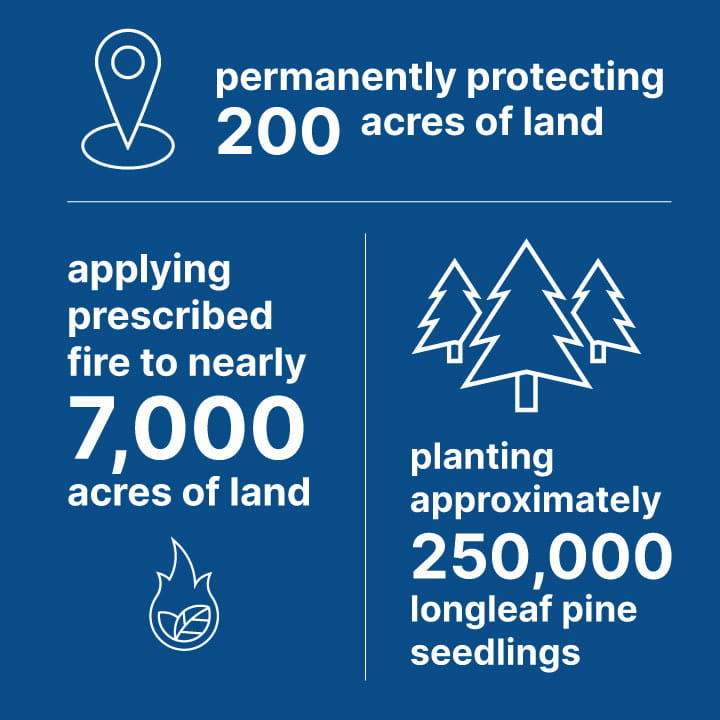
Georgia
In Georgia, The Nature Conservancy conducted a wide range of conservation, restoration and land management activities on the Chattahoochee Fall Line (CFL) near Fort Benning military base. Achievements in 2021 included permanently protecting 200-acres of land, applying prescribed fire to nearly 7,000-acres, and planting approximately 250,000 longleaf pine seedlings across 418-acres of The Nature Conservancy / Georgia Department of Natural Resources lands. In addition, 732 acres of The Nature Conservancy-owned forest in the CFL received beneficial timber harvest actions – such as forest thinning and removal of undesirable or non-native species – to benefit the long-term restoration process and the reestablishment of longleaf and shortleaf pine.
In 2021, TNC Georgia also implemented diverse forest management approaches on their managed properties in the CFL, including an expanded prescribed fire season, reintroduction of longleaf pine during timber harvest, and incorporating shortleaf pine seedlings into longleaf pine plantings to increase diversity. Last year also marked The Nature Conservancy’s launch of the River Valley Compatible Community Development Project, which works with rural communities around Fort Benning to promote economic development in tandem with private and public land conservation.
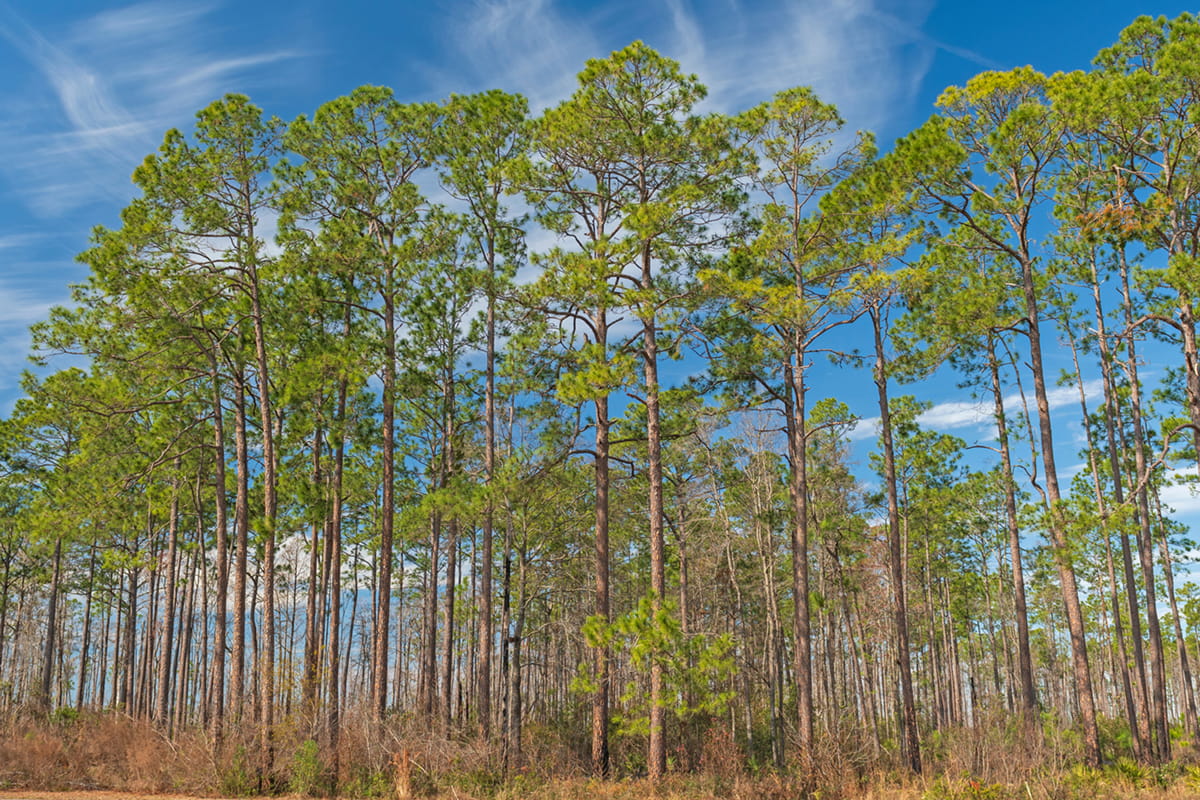
South Carolina
The Nature Conservancy in South Carolina made significant advances with forest conservation strategies centered on the Sewee Longleaf Conservation Cooperative (SLCC) landscape on the coast north of Charleston. The SLCC spans a 1.7 million-acre native longleaf pine ecosystem of working forests, coastal estuaries, floodplain swamps and freshwater rivers and is anchored by the Francis Marion National Forest (FMNF). In partnership with TNC, FMNF plans to restore 91,000-acres of longleaf forest as they work to protect their forestland against the growing sprawl of the Charleston metro area along their southern border. In addition to this important conservation effort with FMNF, SLCC also works to connect with federal, state, county and private landowners to leverage collective investments for longleaf pine restoration. Key partnerships with Charleston County Parks and Recreation Commission, Pee Dee Land Trust, Lowcountry Land Trust, South Carolina State Parks and the Belle W. Baruch Center at Hobcaw Barony enable SLCC to connect to landowners to improve and maintain large, critically important tracts of longleaf pine forest and wildlife habitat.
To support their efforts with SLCC, The Nature Conservancy is engaged in conservation efforts throughout the region. In 2021, TNC acquired 5,718-acres of critical habitat along the Santee River in Georgetown County and partnered with Open Space Institute to acquire two of the largest undeveloped, unprotected properties situated along that same waterway and abutting the FMNF. Conservation of these properties adds key habitat to the largest core wilderness and contiguous block of coastal protection in the state. Other initiatives included 30,000-acres of prescribed fire (including 14,049 within FMNF borders), planting of 72,352 longleaf pine seedlings, and a research partnership with Clemson University to study how prescribed fire affects carbon sequestration in longleaf pine trees over time.
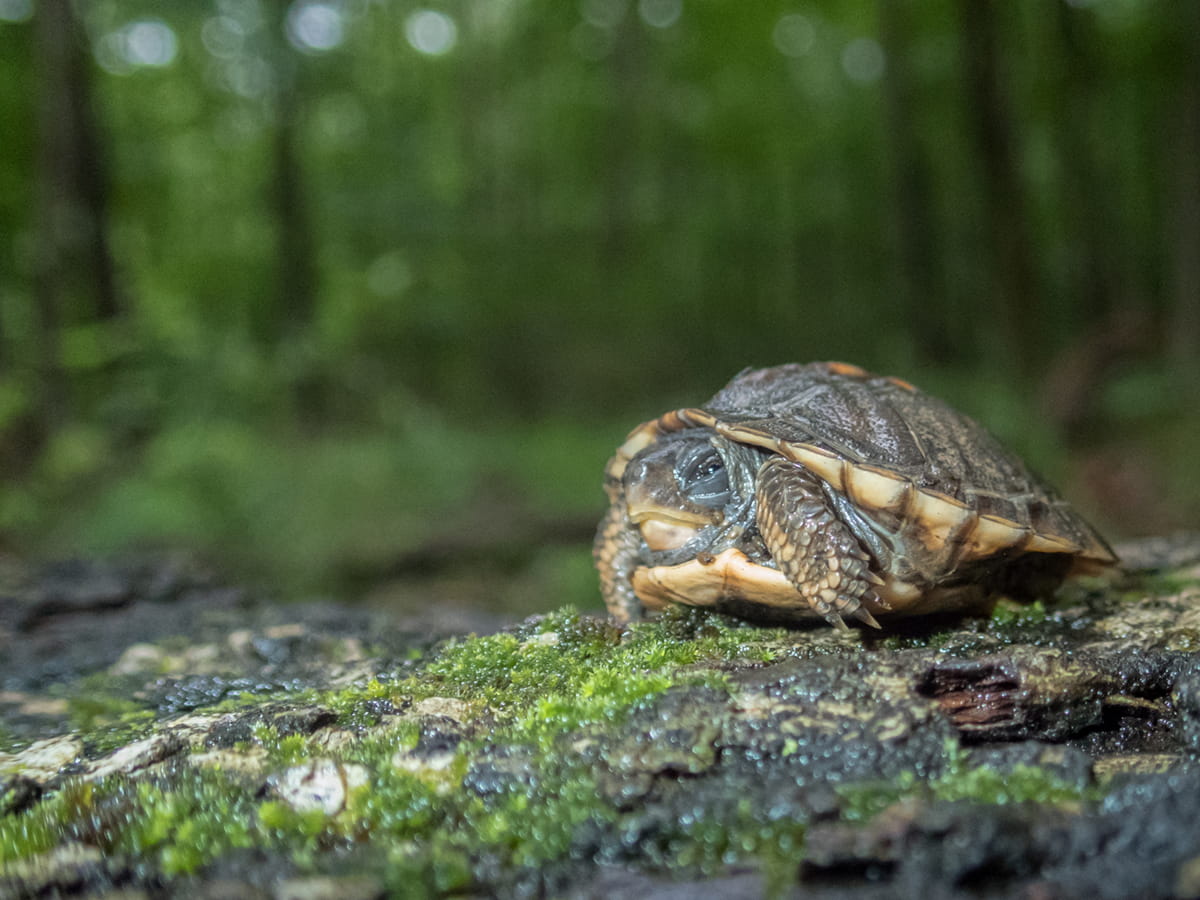
Tennessee
In Tennessee, WestRock funding from a previous fiscal year supported the 2021 completion of a critical land acquisition project by The Nature Conservancy that saw 1,101-acres – known as the Corum tract, 99% of which is forested – added to the 22,000-acre Bear Hollow Mountain Wildlife Management Area (WMA). The Corum tract was acquired by The Conservation Fund with help from various partners, including the WestRock Foundation, The Nature Conservancy, state, federal and private donors, with the title transferred to the State of Tennessee for protection within the Bear Hollow Mountain WMA. This acquisition is important to conservation efforts along Tennessee’s southern border, as the tract contains a critical headwater catchment for local waterways, as well as multiple high-priority forest types and threatened species, including plants, birds, bats and reptiles.
